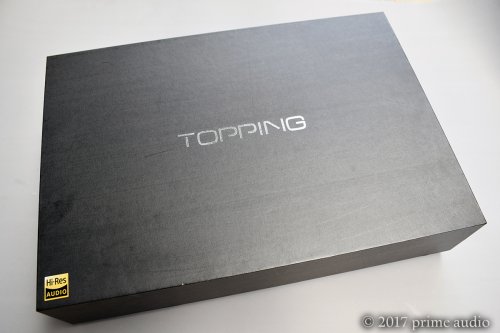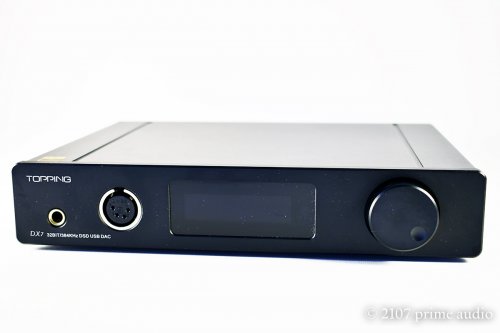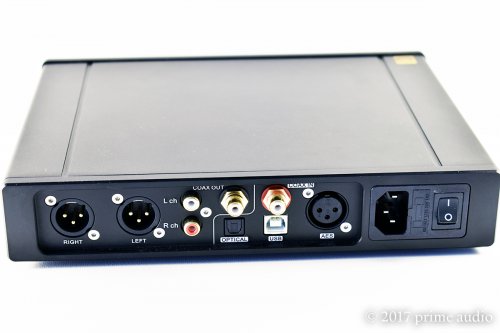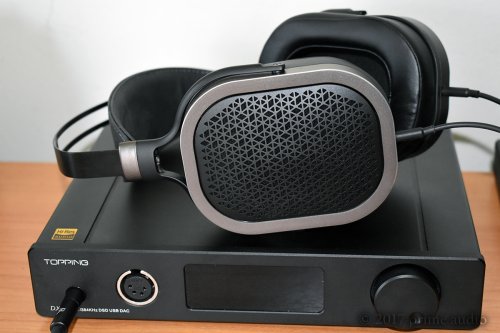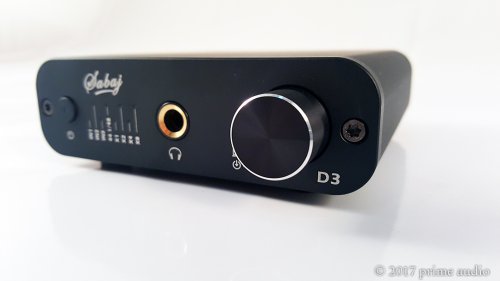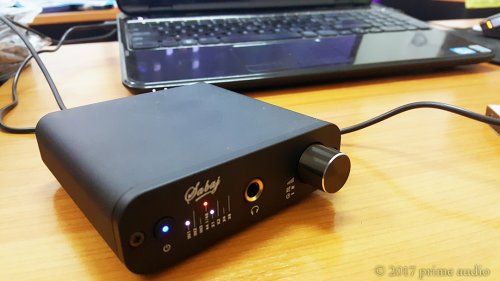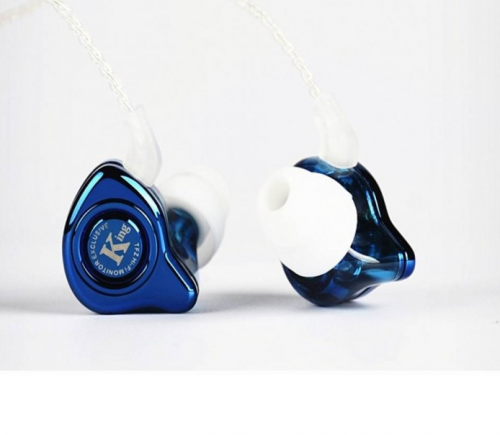
A while back I reviewed the V200 Bluetooth, Active Noise Cancelling headphones from the Southern California based company iDeaUSA. Although I wasn't blown away by the sound quality I was very impressed overall, in particular with it's stellar build quality in relation to the price. So when the company asked me if I would be interested in reviewing their latest model I agreed without hesitation as I was curious to see if they could maintain such high standards at a budget entry level. And so here we are today, taking a look at the V203. This model doesn't have ANC like the V200 but it is another aptX Bluetooth headphone with an even better stated battery life (40 hours) than the previous models. Let's take a look and see what it has to offer.
Disclaimer
This product was provided for the purpose of an honest review. I'm not affiliated with the company and all observations and opinions here are my own, based on my experience with the product.
The V203 currently retails for $55.99 and is available on Amazon and AliExpress.
http://www.ideausa.com/
Amazon link
AliExpress link
Packaging and accessories
The V203 comes in a small, green and black box (mine got a little beaten up in transit), with a nice image of the headphone on the front. Opening it up we find the headphones seated in a molded plastic tray. Underneath the tray are the rest of the goodies but let's break it all down into a list, so here's what you get in the box:
- V203 headphone
- USB charging cable
- 3.5 mm cable
- soft carrying pouch
- User manual
- Warranty card
![DSC_0047[1].jpg DSC_0047[1].jpg](https://cdn.head-fi.org/a/10005796_thumb.jpg)

The carrying pouch is a really nice, soft protein leather with the AtomiX logo embossed into the front, supple in the hands and feels great. It's quite small but the headphones fit easily as the earcups rotate and fold in, making them very portable.

Build, comfort and isolation
Just like their previous models, iDeaUSA has another extremely well built headphone with the V203. Weighing in at 225g they're not only light but they look great too.
Starting with the headband, it's nicely padded and covered with protein leather. There's an adjustable metal slider covered by hard plastic with enough leverage for all manner of head sizes. The plastic feels strong and durable and should have good longevity.
The earcups are made from a lightweight aluminium and are plain on the outer side apart from the subtle, embossed AtomicX logo. On the underside of the left earcup is the micro USB plug and a pinhole CVC 6.0 microphone.

On the right earcup are the volume and multi-function buttons.

Earpads on the V203 are filled with memory foam and hug the ear nicely, making them very comfortable and at the same time providing a good seal. The insides look a bit small but there's actually a space underneath the pads that the ears go into. Even my large, Dumbo-ish ears fit comfortably inside. Clamping force is firm but not uncomfortable at all and the headphones sit securely on my smallish sized head. The padded headband rounds out the experience and overall this is a really comfortable headphone, more so than the V200. On the inside of the earcups there's a large L and R denoting left and right sides, similar to Bose headphones.

Being closed back, aluminium cans these do a pretty good job of isolating outside noise. I can't hear myself typing on my mechanical keyboard right now. In fact I can't hear much of anything except for my music (being played at low volume) and the occasional word from the nearby television. It's about average for a closed back headphone, perhaps a little better than some because the memory foam in the pads does form a consistent seal around the ears.


Bluetooth
The V203 come with 4.1 and covers A2DP/AVR CP/HSP/HFP /APT-X, enabling high quality wireless audio. With a range of 10m you have plenty of room to move. In fact these headphones have some of, if not the very best Bluetooth connectivity I've ever experienced in a headphone. When leaving my Samsung Galaxy Note 5 on my desktop in the living room I can walk through the kitchen and all the way to my back door without a single cutout or hiccup. That's really impressive, especially considering there's a thick wall standing in between. Pairing is simple, fast and painless and is accompanied by audible voice cues.
Battery life
Rated at 40 hours of playback the V203 has a well above average battery life and during my testing I found the numbers to be accurate. With a 3.5 hour charge time these headphones have an astonishing 1200 hour standby time. The 500mAh rechargeable lithium-ion battery provides the kind of experience I can really appreciate in a wireless headphone and makes it seriously worth "cutting the cables". For good or bad, this one is going to be my benchmark going into the future as far as battery life is concerned.

Sound
Gear used for testing
- Samsung Galaxy Note 5
- Acoustic Research AR-M20
- Audio Engine H3 Wireless (built-in headphone amplifier)
When using the audio cable these cans are easy to drive from any source without any significant loss in quality. They sound equally as good from a smartphone and a quality DAP. I didn't notice much difference when moving up to higher quality headphone amplifiers.
Like the V200 the V203 has boosted bass but this newer model is less boomy and better controlled. It has a real authoritative punch and is quite prominent in the sound. Sub-bass is well taken care of too, having pretty good extension and a well disciplined rumble that behaves itself quite nicely. Bass can on occasion be a little too eager to please such as in "Leech" by Katatonia where the kick drum has a bit too much impact.
Midrange is recessed and sits behind the bass and lower treble but it does maintain good clarity and only suffers minimal bass bleed. Tonality is quite good, doesn't sound overly colored and manages a natural sound. Female vocals stand out a bit better due to a boost in the upper mids while male vocals sound somewhat thin in comparison. There's quite a peak around 2-3kHz that gets a little shouty and can cause some discomfort but overall it's not bad.
Treble is boosted again, hence the V-shaped signature but it's pretty good, with a peak between 8-9kHz but above that things are pretty smooth. In The Pineapple Thief's "No Man's Land" the crescendo of electric guitars and crash cymbals towards the end often has me scrambling for the volume down button but with the V203 I had no problem with it whatsoever. Dr Dre's Compton album has quite a bit of inherent sibilance throughout the recordings but again the V203 manages to keep it in check.
Soundstage is pretty good for a closed back headphone, especially one with such a strong bass. It has more width than depth of course but the imaging is impressive making this a good one for gaming though it obviously has a positive effect in music too.

Conclusion
iDeaUSA continues to release great value Bluetooth headphones and with the V203 they've really raised the bar. The battery life alone almost makes these worth considering. You get a full 40 hours of aptX high quality wireless audio which is an outstanding figure and negates one of the biggest drawbacks (in my opinion) of using a Bluetooth product. With that kind of longevity between charges it actually does make using a cable the less desirable option.
The next thing this has going for it is the exemplary build quality, which by the way comes with a one-year warranty. This is a really well built product that can take a beating and come out unscarred. And being foldable it's compact enough to easily throw into a bag without consuming much space.
All this comes in an attractive and comfortable form factor which at this point is just icing on the cake. This is a great looking headphone with an understated style that doesn't try to impress with gaudy or flashy appendages but simply looks good. Will it satisfy the discerning audiophile? Maybe not but then again it's not really aiming at that demographic. This is for people who want a decent sounding Bluetooth headphone with good battery life for watching videos, gaming or listening to music. Priced at just $59.99 the iDeaUSA easily gets a recommendation for it's feature set and outstanding value.































































































































